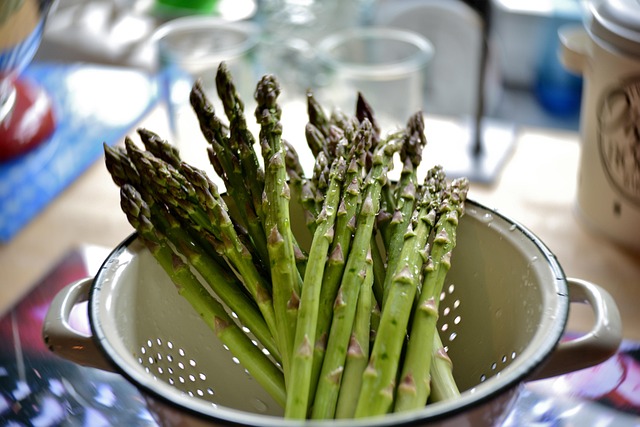Eco-friendly kitchen floors, made from renewable or recycled materials like bamboo, cork, and recycled vinyl, offer a sustainable, stylish, and healthy alternative to traditional flooring. They reduce environmental impact, improve indoor air quality, are durable, easy to maintain, water-resistant, and scratch-resistant. Installation requires meticulous preparation and proper techniques, while maintenance includes regular cleaning and inspections. These floors merge style with sustainability, enhancing kitchen ambiance and boosting home value, appealing to environmentally conscious buyers.
“Revolutionize your kitchen with eco-conscious flooring choices that blend sustainability with modern aesthetics. In today’s green-focused world, opting for eco-friendly kitchen floors is not just a trend but a responsible step towards reducing your environmental footprint. This article explores the multifaceted benefits of such floors, from reduced carbon emissions to easy maintenance. We delve into popular sustainable materials, installation tips, and styling ideas, empowering you to make an informed, eco-conscious decision.”
- The Benefits of Eco-Friendly Kitchen Flooring
- Popular Sustainable Floor Materials for Kitchens
- Installation and Maintenance Tips for Green Kitchen Floors
- Styling Eco-Conscious Kitchen Floors for Modern Esthetics
The Benefits of Eco-Friendly Kitchen Flooring
Eco-friendly kitchen flooring offers a sustainable and stylish option for modern kitchens, providing numerous benefits that go beyond aesthetics. One of the key advantages is their environmental impact; these floors are made from renewable materials or recycled products, reducing carbon footprints and conserving natural resources. They also contribute to better indoor air quality as they are often free from harmful chemicals and volatile organic compounds (VOCs) commonly found in traditional flooring options.
Additionally, eco-friendly kitchen floors are durable and easy to maintain, ensuring longevity and minimizing waste. Many of these materials are water-resistant and scratch-resistant, making them ideal for high-traffic areas like kitchens. They can also be easily installed or replaced, allowing for flexible design choices without generating excessive construction waste. This not only saves money but also promotes a more sustainable lifestyle, making eco-friendly kitchen flooring a smart choice for both homeowners and the environment.
Popular Sustainable Floor Materials for Kitchens
When it comes to modern kitchens, choosing eco-friendly floor materials not only aligns with sustainable practices but also adds a touch of style and elegance. Some popular options include bamboo, a rapidly renewable resource known for its durability and aesthetic appeal. Another leading choice is recycled vinyl flooring, which utilizes post-consumer waste, offering both longevity and reduced environmental impact.
Natural linoleum, made from renewable linseed oil, wood flour, and natural rubber, is also gaining traction as an eco-friendly alternative to conventional kitchen floors. Its antimicrobial properties and low VOC (volatile organic compound) emissions make it a healthy choice for busy households. Additionally, cork flooring, derived from the bark of cork oak trees, provides excellent insulation, comfort underfoot, and an appealing texture that complements modern design trends in kitchens.
Installation and Maintenance Tips for Green Kitchen Floors
When installing eco-friendly kitchen floors, it’s crucial to follow proper techniques for a durable and aesthetically pleasing finish. Begin by preparing the subfloor, ensuring it’s clean and level. Use non-toxic adhesives and sealants to promote indoor air quality. For natural materials like bamboo or cork, consider using click-lock systems for easier installation and removal, allowing for future refinishing or replacement. Regular cleaning involves dust mopping or vacuuming with a soft brush attachment to prevent scratching. Avoid harsh chemicals, opting instead for eco-certified cleaners. Regularly inspect for damage, especially at hinges and corners, and address issues promptly using recommended repair kits. Proper maintenance ensures your green kitchen floors not only look great but also maintain their structural integrity over time.
Styling Eco-Conscious Kitchen Floors for Modern Esthetics
When it comes to modern kitchen design, selecting eco-friendly flooring options that blend style and sustainability is essential. Lucky for us, the market offers a plethora of choices that cater to both aesthetics and environmental consciousness. Materials like bamboo, cork, and recycled plastic not only reduce our carbon footprint but also add a unique charm to any space. These natural options provide warmth and texture, enhancing the overall ambiance while aligning with contemporary trends.
Styling eco-conscious kitchen floors allows for creative expression and a chance to showcase your commitment to sustainability. From sleek bamboo planks that mimic traditional wood to cork tiles with intricate patterns, there’s a style for every taste. Incorporating these materials can also increase the value of your home, as potential buyers increasingly appreciate environmentally friendly features. So, why not transform your kitchen into a beautiful and eco-friendly sanctuary?
Modern kitchens can beautifully embrace sustainability with eco-friendly flooring solutions that offer both style and functionality. By choosing materials like bamboo, cork, or recycled tiles, you contribute to a greener planet while enjoying long-lasting durability. With proper installation and maintenance, these sustainable options not only reduce environmental impact but also enhance the overall aesthetic of your space. Incorporate eco-conscious floor choices to create a kitchen that is kind to the planet and visually appealing.
